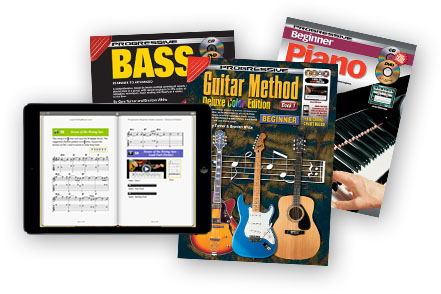<< First < Previous | Intro 1 2 3 4 5 | Next > Last >>
Back to Table of Contents
| 14 | (Fingers) |
Video
Audio – Solo Track
Audio – Backing Track
| 15 | (Fingers) |
Video
Audio – Solo Track
Audio – Backing Track
Turnaround Progressions
In Lesson 2 you were introduced to the 12 Bar Blues chord progression. Another common chord progression is called the Turnaround. Like 12 Bar Blues, it is the basis of many songs, and it will probably sound familiar to you also. The above example is a Turnaround.
Unlike 12 Bar Blues where the progression occurs over a fixed number of bars, the Turnaround progression may vary in length as in the following examples. However, the chord sequence remains the same. Some of the biggest hit records of all time are based upon a Turnaround progression. Every year since the beginning of Rock music there have been hit songs based upon 12 Bar Blues or Turnarounds.
Songs using the Turnaround Progression
- Stand by Me – John Lennon
- I Will Always Love You – Whitney Houston
- Return to Sender – Elvis Presley
- All I Have to do is Dream – The Everly Brothers
- Be My Baby – Ronettes
- Everlasting Love – U2
- Can’t Smile Without You – Barry Manilow
- Please Mr Postman – The Beatles
- Blue Moon – Various Artists
- Tell Me Why – The Beatles
- Lets Twist Again – Chubby Checker
| 16 |
The following example is a Turnaround in the key of G. It is 8 bars long and contains dotted quarter notes.
| 16 | (Fingers) |
Video
Audio – Solo Track
Audio – Backing Track
In the Turnaround progression that follows, the notes can be played staccato by releasing the pressure on the fretted note (to stop it sounding) immediately after playing it.
The left hand maintains contact with the strings at all times.
The first three bars are played staccato and the last bar is played legato.
| 17 | (Fingers) |
Video
Audio – Solo Track
Audio – Backing Track
The Slide
The slide is a technique which involves a finger moving along the string to its new note. The finger maintains pressure on the string, so that a continuous sound is produced until the desired note is reached. The left hand moves from one note to the next, upwards or downwards on the fretboard. The slide is indicated by a line joining two notes.
Only the first note is played by the pick or the right hand fingers, while the second one is entirely produced by the left hand finger sliding up or down the fretboard. The length of the slide can be one fret (as in the next example) or as many frets as you wish. Practice sliding your finger up and down the fretboard. Play only the first note.
The slide is indicated on the music staff by a line leading up to the note you are sliding to. In tablature notation the slide is indicated by a line with the letter “s” above it.
| 18 | 12 Bar Blues in G |
The following 12 Bar Blues progression uses a slide and dotted quarter notes. In all bars except 9 and 12 the third note is not picked but is sounded by the slide. The last three notes in each bar are all played by the first finger of the left hand. The small numbers next to the notes on the bass staff indicate which left hand finger to use.
| 18 | (Fingers) |
Video
Audio – Solo Track
Audio – Backing Track
| 18 | (Pick) |
Video
Audio – Solo Track
Audio – Backing Track
<< First < Previous | Intro 1 2 3 4 5 | Next > Last >>
Back to Table of Contents
































